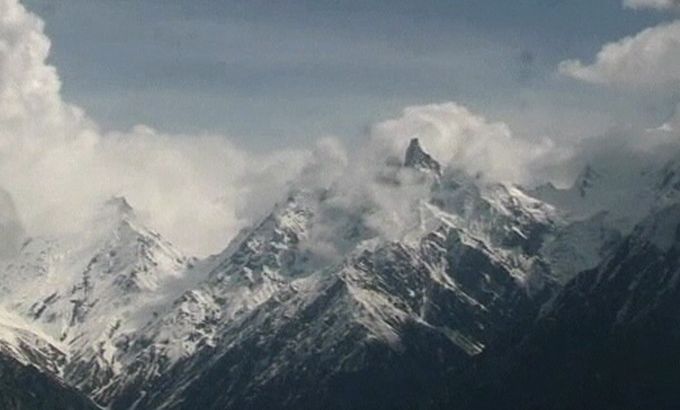Himalayan glacier region ‘gaining ice’
Study finds some glaciers in Karakoram mountain range are growing in mass, despite ice-melt caused by global warming.

Some glaciers in a Himalaya mountain range gained a small amount of mass between 1999 and 2008, new research shows, bucking the global trend of glacial decline.
The study, published on Sunday in the Nature Geoscience journal, also said that ice melt from the Karakoram mountain range in the eastern Himalayas had contributed less to rising sea levels than previously thought.
Keep reading
list of 4 itemsLost Futures
Photos: Greek valley that became a lake stirs drought debate
Botswana threatens to send 20,000 elephants to Germany
With global average temperatures rising, many glaciers, ice caps and ice sheets are melting, contributing to increasing sea levels that threaten the populations of low-lying nations and islands.
The research, conducted by researchers at France’s University of Grenoble estimates that the Karakoram glaciers gained about 0.11 to 0.22 metres per year between 1999 and 2008.
“Our conclusion that Karakoram glaciers had a small mass gain at the beginning of the 21st century indicates that those central/eastern glaciers are not representative of the whole (Himalayas),” the researchers said.
The study appears to confirm earlier research that had suggested the Karakoram glaciers had not followed the global trend of glacial decline over the past three decades. The mountain range’s remoteness had made it hard to confirm its behaviour.
The Karakoram mountain range spans the borders between India, China and Pakistan and is covered by 19,950 square kilometres of glaciers. It is home to the second highest mountain in the world, K2.
“We suggest that the sea-level-rise contribution for this region during the first decade of the 21st century should be revised from +0.04mm per year to -0.006mm per year sea-level equivalent,” the study said.
Rising sea levels
The Himalayas hold the planet’s largest body of ice outside the polar caps and feed many of the world’s great rivers, including the Ganges and Brahmaputra, on which hundreds of millions of people depend.
The world’s glaciers, ice caps and ice sheets shed about 4,200 cubic kilometres from 2003 to 2010, experts suggest, which is enough to raise sea levels by 12mm over that period.
Graham Cogley, a glaciologist based at Trent University in Canada, told Al Jazeera that while the study altered some ideas, it did not necessarily alter “the big picture”.
“When we put them all together, the glaciers are still delivering a significant and worrying amount of water to the ocean,” he said.
“It means we have to re-do our sums, because although the glaciers up there are growing very slightly, there is a lot of ice in that mountain range, so it will make a difference.”
With regards to the longer term, “there is not much we can say,” Cogley said.
The Karakoram glaciers are also unusual because they are covered with thick layers of rock debris, which means their patterns of melting and mass gain are driven by changes in that debris as well as in the climate.
A separate study in February found that Himalayan glaciers and ice caps as a whole were losing mass less quickly than once feared, offering some respite to a region already feeling the effects of global warming.